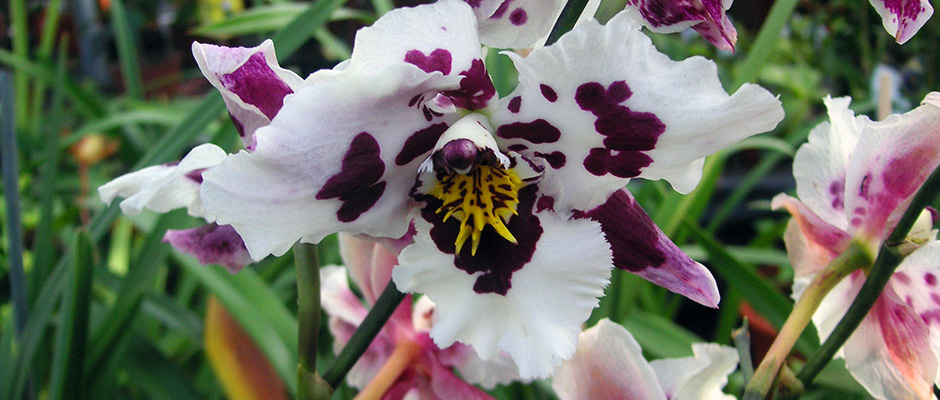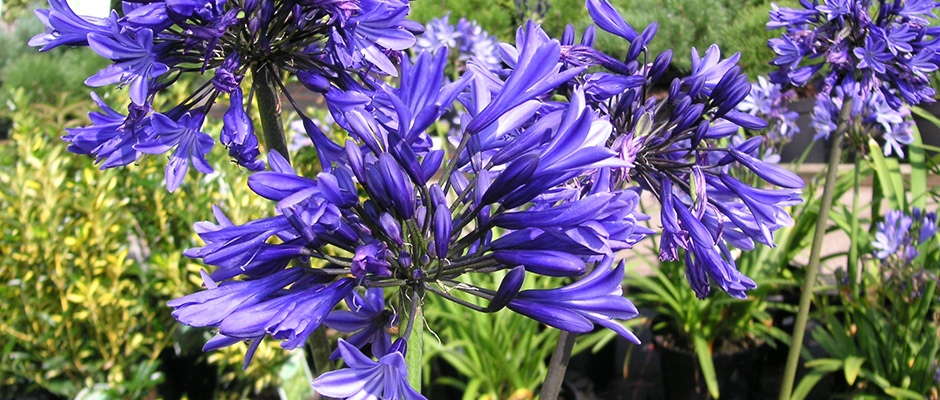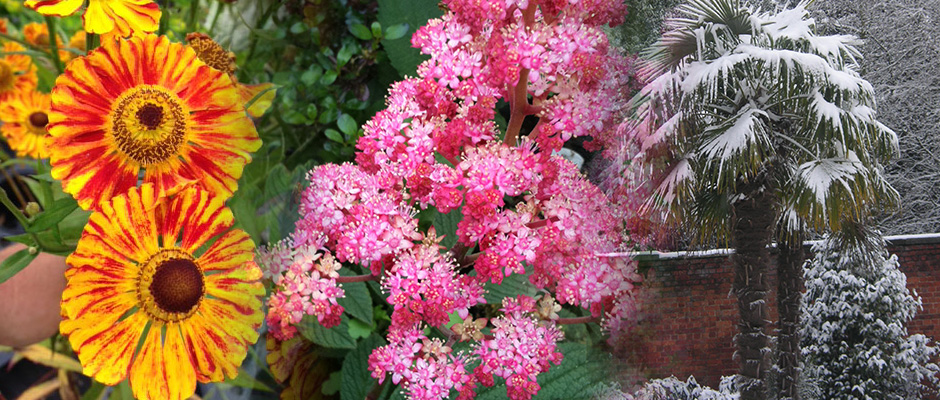All orchids sold by us, are capable of flowering for a long time. And you as the owner, can always get the plant flowering again.
This is a challenge for many people. When you succeed it will give you a lot of fun. You will notice that orchids are thankful plants and not as difficult as you might imagine, so don’t be afraid to try new species. When you buy a new plant it is important to pay attention to the roots (there should be lots of rootsand if they are hanging over the pot this is fine) and at least half the flowers should be open.
Keep orchids in good light but not direct sunlight
The plant likes a room temperature between 18-20 degrees C
Re-potting
When the plant has outgrown its nursery pot (usually after 1½-2 years) it is time to re-pot it in a larger container.
The pot should have large holes in the bottom in order to drain off excess water; this prevents root rot.
Orchids prefer an airy soil mixture, so do not press the soil too firmly. Use Orchid compost
Watering usually causes most problems.
People often overwater. An orchid should NEVER have its roots standing in water. The bottom of the nursery pot has holes that drain away surplus water.
We advise the following
Take the nursery pot containing the orchid out of the ornamental pot (leave the orchid in the nursery pot) and dip it in a tray of water at room temperature. Leave the plant in the water for 5-10 minutes.
Drain the plant and put it back in its ornamental pot.
This way, it never gets too much water.
You can feed once a month. Use liquid baby .bio or similar, at half strength
Add the feed to the container of water you dunk them in
From the expansive selection of orchids, we have chosen a number of varieties which will do well in your home or office.
These are types that can be made to flower again in a living room.
We will try to provide you with some tips concerning their care.
All our plants are cultivated in greenhouses and in tropical circumstances and in an ecologically sound manner.
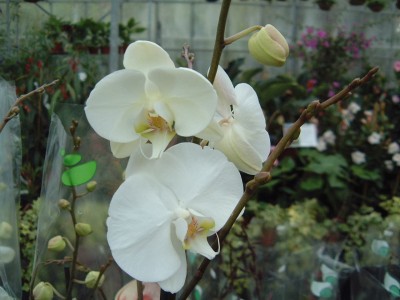
Put the plant in a well-lit place in your living room. The plant can be put in direct sunlight during winter. From early April until early October, the sun is too bright for the plant to be standing directly in it; the leaves can burn.
Reflowering:
After flowering, cut the stalk above the second eye. The eye is a bulge in the flower stalk and can be clearly distinguished. After some time, a new branch develops from the eye.
A new bud will develop under each leaf; these buds will flower. Also cut this branch above the second eye after flowering. This way, the plant will keep blooming.
If it does not reflower put the plant in a cooler room
(15-16 degrees Celsius) during autumn in order to promote the formation of buds.
The plant should naturally be put in a well-lit place.
Since it grows in the tropics, the plant is not used to a temperature below 17-18 degrees. The plant reacts as if it is going to die, and forms a bud to ensure a next generation. Water the plant a little less during this cold treatment.
Put the plant back in its old place when you see the start of a branch.
Cut away the entire branch after it has finished flowering; the plant will not flower on this shoot again.
The plant produces new shoots from which new flower stalk can develop.
During summer (June-August), the plant can also be put in the garden or on the balcony, in a sheltered site.

The plant develops aerial roots. These aerial roots have a function and should not be removed.
Reflowering:
The branch can be entirely cut away after flowering. The shoot from which this branch stems from will not flower again.
The plant develops new shoots which can form 1 or 2 branches per shoot when fully grown. When the shoot is mature, a pseudobulb (hard, green plate) develops. When it is entirely hard and filled, the plant requires significantly less water (once every two weeks). The plant thus has a rest period of about 8 weeks, and new buds develop.

Cut away the entire branch after it has finished blooming.
The plant will form flowers again on the shoot this branch produces. The next branch comes from a new shoot. The plant continuously develops new shoots which can flower once they are fully grown.
You can give the plant a rest period of 6/10 weeks to stimulate flowering.
In June-July-August, put the plant in a sheltered spot in the garden, Water the plant once every two weeks during this period. Put the plant back inside either when you see new flower buds oor before the evenings grow cold.
Epidendrum
Reed-stem epidendrums are floriferous. In the rare instance of a reluctant bloomer, the most common cause is not enough light. Relocating the plant to a spot where it receives as much light as possible and fertilizing regularly should remedy the problem. A well-grown plant produces abundant spikes throughout the year.
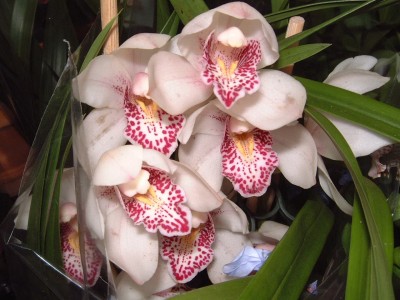
Cut away the entire branch after blooming. The plant will develop new shoots which give 1 or more branches in the following year. In summer, the plant can be put in a well-lit, sheltered place in the garden (not in direct sunlight).
Night-time temperature should not fall below 6C In September, the plant should be put indoors in a cool place.
Cut away the flower shoot entirely after blooming.
The plant will develop one or more new shoots. When this shoot has finished growing, a kind of pseudobulb (hard green plate) will develop. When the pseudobulb is entirely hard and filled, the plant requires less water for a period of 8 weeks. About once every two weeks will suffice.
The plant should be put in a cooler place during this period (around 16C,. This way, the plant is stimulated to flower again.

The Vanda can also be put in a glass vase; the roots attach themselves to the glass.
The plant can be hung outside from May until October as long as the night temperature does not fall below 6 degrees Celsius. Do not hang the plant in direct sunlight.
Watering and feeding
Water the plant by filling the vase with lukewarm water and emptying it after 10 minutes. If your Vanda hangs in a box, then dip the box in a bucket of lukewarm water.
On clear days, dip the roots once a day and twice a week if days are overcast. feed the plant twice a month in the growing season (March-September) with the same concentration as other orchids. Do not feed during winter .
Reflowering:
Cut the branch as short as possible after flowering, without causing damage to the plant.
Vandas have no fixed flowering time and can bloom several times a year. The new bud develops under a new leaf, from which a new flower stem will grow.

